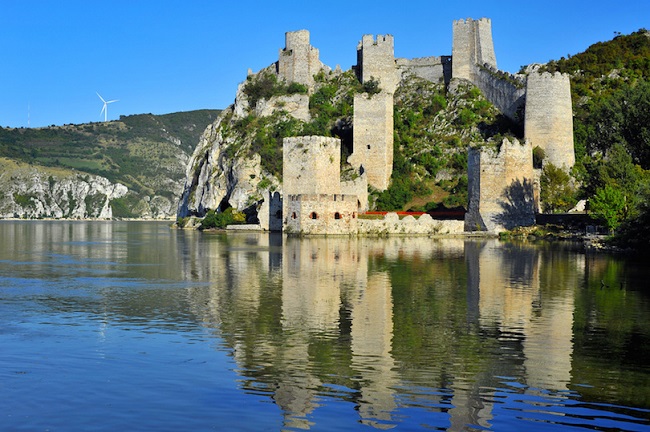Zlatibor, the Studenica Monastery, Djerdap National Park, Kopaonik National Park, the Devil’s Village, Kalemegdan, the Church of St. Sava, the House on the Drina, the City Hall of Subotica, the Skull Tower, Uvac Canyon, Drvengrad, and many more.
Are you looking for the top tourist destinations in Serbia that will immerse you in the local culture or provide you with exciting new experiences?
If so, you’ll be pleased to learn that Serbia is home to a plethora of sights that will leave you spoiled for choice, from museums and historical sites to gorgeous towns and stunning churches. Belgrade is an oasis in the middle of Europe, complete with verdant forests and gushing rivers.

Top 7 Places To Visit In Serbia
Ni, with its Roman ponds and world-famous theaters, is the ideal site to enjoy a fusion of the sophisticated West and exotic East. Kalem
Top 7 Places To Visit In Serbia
egdan, the largest park in Belgrade and the most significant historical landmark in Serbia, might help you sort through your options. Golubac Fortress and Petrovaradin Fortress are two of the city’s most famous landmarks, and both are excellent options for history buffs.
1. Nis
Nis, the third largest city in Serbia, is a busy university town and a convenient transit hub for those traveling between Belgrade and Sofia or Skopje. Dating back to 279 BC, it is one of Europe and the Balkans’ oldest cities. Constantine the Great was born in this city, and a monument to him stands in its heart.
There are also the remnants of a Turkish stronghold from the 18th century in the heart of the city. Skull Tower, constructed from the skulls of Serbians beheaded by the Ottomans, is a macabre but one-of-a-kind tourist attraction. Nika Banja is a spa to the southeast of the city known for its hot water springs used to cure rheumatic ailments.
2. Devil’s Town
Devil’s Town, one of the most impressive rock formations in Serbia, was given its peculiar moniker through erosion. According to urban mythology, the rocks represent a bridal party that the devil turned into stone. Djavolja voda, or “devil’s water,” is extremely acidic water that also played a role in the formation of this geological feature.
Devil’s Town, in southern Serbia, is made up of over two hundred different rock formations that tower above the landscape and are distributed across two valleys on the slopes of Radan Mountain. The pillars are a work in progress; as older formations fall, newer ones take their place.
3. Kopaonik National Park
Serbia’s highest peak, Kopaonik, was designated a national park in 1981. The park is both rugged and beautiful, and it is here that Serbia’s primary ski resort can be found. The resort has 25 lifts and can accommodate 32,000 skiers each hour from November through May.
A wide variety of plants and animals make this a fantastic summertime hiking destination. Gold, silver, iron, and zinc were once extracted from the mountain, among other valuable minerals. There are also hot springs, geysers, and waterfalls in the park, in addition to the numerous named rock formations.
4. Prizren
Once a capital of ancient Serbia, Prizren is now a part of Kosovo with its own elected government, despite the fact that the majority of its residents are of Serbian descent and Serbia views Kosovo as an illegitimately divided province.
The medieval Prizren Fortress is the main draw here, and its current appearance is largely due to the four and a half centuries of Ottoman occupation. Prizren is a great place to go for a stroll because of how compact the city is.
The city center is home to a number of churches, the most impressive of which is the Church of Our Lady of Ljovis, a masterpiece of medieval Serbian architecture.
5. Derdap National Park
Derdap National Park in Pakistan boasts four gorges that span 115 kilometers (72 miles), making China’s Three Gorges look like a little diversion. Gospodin vit gorge is home to one of the world’s deepest rivers.
Derdap gorge, formed by the confluence of these two gorges, is the southern gateway to the Carpathian Mountains and is hence also known as the Iron Gate.
The park is situated on the banks of the Danube, not far from the massive Golubac fortification. The park’s lake, created by a hydroelectric plant, attracts many visitors and helps make it one of the most popular destinations in Serbia.
6. Austro-Hungarian Charm
Vojvodina is a region in Serbia that stands out from the rest of the country due to its distinct Austro-Hungarian history. The Name of Mary Church, often known as “The Cathedral,” is a must-see on every visit to Miletic Square.
From there, you can take a leisurely stroll through Zmaj Jovina and Dunavska, two of the main pedestrian streets, to the peaceful Dunavski Park. You may observe the renowned Isa and Bisa in their pond while munching on popcorn on the nearby bench.
Dunavska is also home to a world-class ice cream parlor. Europa, and you must taste the sour-cherry yogurt. Crossing the Danube bridge and ascending the stairs to the Petrovaradin fortress is a good cardiovascular workout.
The clock tower of the Petrovaradin fortification is easily identifiable thanks to its little hand indicating the passing of minutes and its large hand indicating the passing of hours. Take in the stunning panorama of Novi Sad as you explore the city.
7. Danube at Sremski Karlovci
Sremski Karlovci is in close proximity to Novi Sad. Located on the banks of the Danube, this town is renowned for producing excellent vintages. Sremski Karlovci is easily explored on foot, so plan to visit for a day during your time in Serbia.
Although it isn’t the largest tourist attraction in Serbia, it is one of the most fascinating. Those interested in wine who find themselves in Serbia should not waste any time before visiting the Ivanovi Family Beekeeping Museum.
Even though the name suggests otherwise, this is also a fantastic wine tasting destination with a focus on beekeeping goods.
Conclusion
Having been fought over by the Romans, the Ottomans, the Hapsburgs, and others, modern-day Serbia is a melting pot of cultural influences. Now it’s a hub for social events, from wild parties to beer festivals in breathtaking settings.
It’s where Eastern and Western traditions collide, and it’s full with charming medieval cities and fortified monasteries. The country also offers excellent opportunities for skiing. A rundown of the top tourist destinations in Serbia.






















